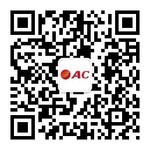LANGUAGE↓

News & Policies

Negative List for Cross-Border Service Trade Released
The China (Shanghai) Pilot Free Trade Zone for the first time released a negative list for the cross-border service trade on October 9 2018 and the negative list will take effect on November 1 2018.
A total of 159 special administrative measures covers 31 industries in 13 sectors the negative list. Among the 159 special management measures, 31 belong to the financial sector, which include monetary and financial services, capital market services, insurance and other financial services. Others involve postal and courier services, culture, sports and entertainment, scientific research and technological services, leasing and commercial services, telecommunications, software and information technology services, wholesale and distribution services, water conservancy, environment and public facilities management, education, agriculture, forestry, animal husbandry, fisheries and residential services, construction, health and social services.
The negative list gives the definition on the “Cross-Border Service Trade” as "commercial activities delivered by overseas service providers to consumers in the China (Shanghai) Pilot Free Trade Zone".
Overseas services and service providers investing in areas not listed will now be treated the same as domestic companies, reducing red tape and other restrictions. Special regulations governing investment by foreign entities, such as requiring a Chinese joint venture partner, will continue to apply to those sectors on the negative list.
There will be three major business models covered by the negative list, including
• cross-border delivery: trade cross-border service directly delivered to the FTZ
• consumption abroad: overseas service provided to consumers in the FTZ, and
• the presence of natural persons: overseas service delivered via natural persons in the FTZ
The Ministry of Commerce also showed the statistics that China’s total volume of service trade amounted to $695.68 billion in 2017, the largest after the United States. Shanghai surpassed all other cities in the nation in terms of the transaction volume of service trade, with the number coming at $195.5 billion. Service trade contributed up to 29.1 percent to the city’s total outbound trade volume last year.
China government hopes that the newly released negative list will help to speed up the supply-side reform for ongoing service trade in Shanghai and promote the upgrading of foreign trade. For the next step, the municipal government will look to further opening-up in tourism, education, telecommunications, professional services and qualifications for professional technicians in certain areas.
Details about the policy please refer to the link below:





